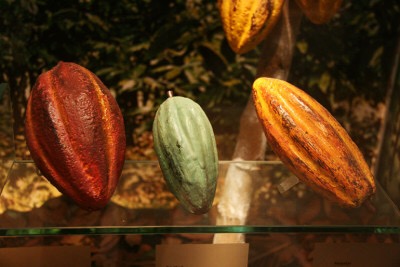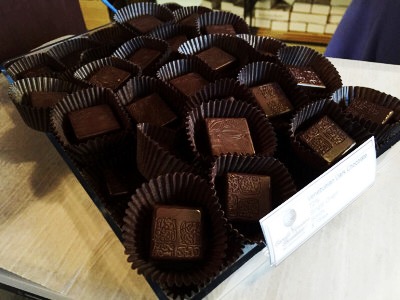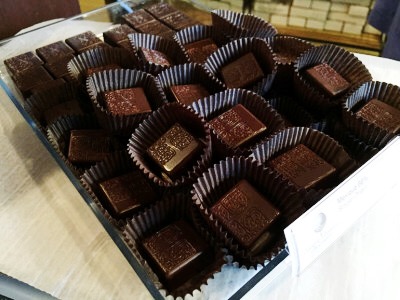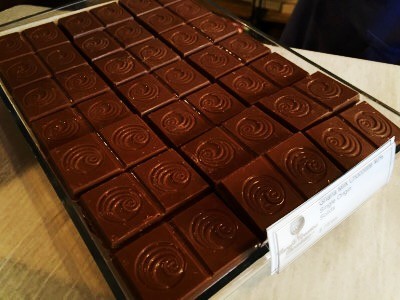Chocolate is one of the most beloved foods across the globe. Its plant source is grown in many countries and regions, and as a result provides a variety of chocolates with distinct flavor and character. Gourmet chocolateries carefully select the regions from which their chocolate is sourced based on these distinguishable tastes. Through my lifetime of chocolate-eating experiences, I’ve learned that single-origin chocolates, compared to multiple-origin chocolates, have more unique flavors and textures. To find out more, I talked to Carol Freedman and Tony Brokenborough of Carol’s Creative Chocolatez about their single-origin chocolates. Here’s what I learned from our conversation:

Photo by Raadhika Kher
All high quality, single-origin chocolates are very smooth due to the fact that they are produced with large amounts of cocoa butter. Similar to wine, coffee and olive oil, cocoa develops its flavor from the soil in which it is grown. There are three trees from which cocoa is grown: the Forastero, the Criollo and the Trinitarian (a hybrid tree of the first two). Forastero cocoa generally has strong, rich flavor. Criollo cocoa is much more subtle and Trinitario cocoa falls somewhere in between the two. These three types of trees are the source of all of the chocolate products in the world. Combining the type of tree, which contributes to the cocoa’s richness, and the region in which a cocoa plant is grown, results in very distinct chocolate flavor. Since so many countries are involved in cocoa production, the world is luckily supplied with a huge variety of chocolate to choose from. Here are some of the single-origin chocolates that are sold at Carol’s Creative Chocolatez:
Tanzania – 75% Dark Chocolate

Photo by Raadhika Kher
This chocolate is unique in that it has a slightly reddish hue and an earthy and spicy flavor. It is what’s considered a thin chocolate, in which underlying flavors are released very quickly. Tanzanian chocolate is great for highlighting citrus flavors.
Venezuela – 72% Dark Chocolate

Photo by Raadhika Kher
Venezuelan chocolate generally comes from the Trinitario tree. Its flavor is a balance between the mildness of the Criollo and the strength of the Forastero and is described as “the best of both worlds”. Venezuelan chocolate is commonly used as a coating for praline fillings, nuts, fruits and wine ganaches.
Mexico – 66% Dark Chocolate

Photo by Raadhika Kher
Mexican chocolate is produced from both Forastero and Criollo cocoa trees. This chocolate is quite fruity, due to the soil composition in which it is grown. It is considered a thick chocolate and releases its flavor slowly. Mexican chocolate is best used to coat caramels, as the slow release complements the caramel flavor.
Santo Domingo – 70% Dark Chocolate

Photo by Raadhika Kher
Santo Domingo chocolate is produced from some of the finest Forester cocoa trees in the world. It has a slightly fruity flavor, possibly from being grown in soil shared with mango and banana plants. This rich, and smooth chocolate works well with anything that needs a strong pairing: red wine, scotch, bourbon, and even meat.
Ghana – 41% Milk Chocolate

Photo by Raadhika Kher
One of the few single-milk-chocolates, this Ghana chocolate is surprisingly subtle. It is not overwhelmingly sweet when eaten as a chocolate without filling; however, it is commonly used to coat hazelnut and praline fillings.
So there you have it – a quick lesson on single-origin gourmet chocolates. Now go out, explore, and enjoy your new-found knowledge and appreciation for the world’s best commodity.


